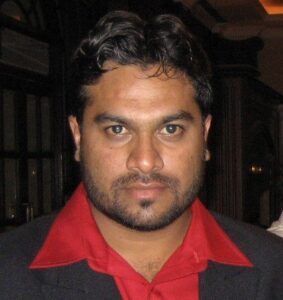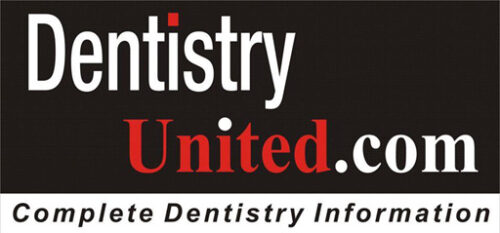By Syed Nabeel BDS D Orth MFD RCSI MFDC RCPSG
Artificial intelligence (AI) and machine learning (ML) are revolutionizing dentistry—boosting diagnostics, treatment planning, and patient care. While many dental designers and technicians are already leveraging AI-based tools like Exocad, Blender, and Dentbird to craft prostheses, these tools mainly serve as end-user solutions. They help prosthodontists and dental technicians bring clinical plans to life.
But what if you’re a dentist wanting to build a career in AI itself—designing the next wave of smart tools, not just using them? That’s what Dr. Karen Popescu wanted to know.
The Call: A Dentist’s Curiosity
Fresh from dental school, Karen was excited about blending her clinical skills with AI. But she felt lost—unsure where to begin in this data-driven world. In our virtual call, I offered her a clear, structured roadmap to launch her AI journey, blending her dental background with the technical know-how she needed.
Five Key Areas to Master
I emphasized that building a career in AI for dentists isn’t about replacing your clinical skills—it’s about amplifying them with data science and programming. Here’s how Karen can do it—and how you can too.
1. Learn AI and ML Fundamentals
“You don’t need to be a tech genius overnight,” I told Karen, “but grasping the basics will help you understand how to integrate AI into your work.”
✅ What to Learn:
Start with core concepts: machine learning, deep learning, and neural networks. Explore how convolutional neural networks (CNNs) interpret dental X-rays, or how natural language processing (NLP) can help manage patient communication.
✅ Resources:
- Coursera: AI for Everyone by Andrew Ng
- edX: Introduction to Artificial Intelligence
- W3Schools: AI tutorials
✅ Why It Matters:
Understanding these basics helps you make sense of AI tools like Pearl’s Second Opinion for radiograph analysis—so you can use them confidently in your clinic.
2. Build Basic Programming Skills
Learning to code will open doors to data-driven dentistry.
✅ What to Learn:
Focus on Python, the go-to language for AI. Libraries like NumPy, Pandas, and TensorFlow are great for dental data and AI model building.
✅ Resources:
- W3Schools: Python tutorials
- Codecademy and DataCamp: Beginner-friendly courses
- Practice with Jupyter Notebooks using dental imaging datasets
✅ Why It Matters:
Programming lets you preprocess data, analyze AI results, or collaborate on building tools like automated crown design systems.
3. Master Data Science
AI needs data—X-rays, intraoral scans, treatment histories—to work. Knowing how to handle this data is essential.
✅ What to Learn:
Data preprocessing, feature extraction, and metrics like sensitivity and specificity. Explore dataset bias—making sure AI tools are fair and effective for all patients.
✅ Resources:
- Coursera: Data Science for Beginners
- edX: Data Analytics for Healthcare
- Learn about ADA imaging standards and protocols
✅ Why It Matters:
With data skills, you can help train accurate AI models—like caries detection algorithms that actually work in real-world settings.
4. Explore AI Applications in Dentistry
AI is already here—find your niche!
✅ What to Learn:
Explore clinical AI applications:
- CephX for orthodontic analysis
- 3Shape Automate for crown design
- DentalMonitoring for remote scans and follow-ups
✅ Resources:
- NationalDentex webinars
- PubMed and Journal of Dental Research articles
- Healthcare AI courses on Coursera and edX
✅ Why It Matters:
By understanding what’s already out there, you can see how your clinical insights can help develop the next generation of AI tools.
5. Collaborate and Prioritize Ethics
AI isn’t just about algorithms—it’s about people.
✅ What to Learn:
Ethics and patient privacy standards—like the Australian Dental Association’s AI policy. Build networks with dental tech communities on ResearchGate and professional groups.
✅ Resources:
- W3Schools and Coursera: AI ethics courses
- Dental tech conferences to meet engineers and innovators
✅ Why It Matters:
Responsible AI earns patient trust and ensures you’re part of a team that builds safe, effective solutions.
Practical Steps for Dentists
To help Karen—and you—start the journey:
Enroll in Courses: Start with W3Schools for Python, Coursera for AI basics, and edX for data science.
Join Communities: Get involved with DentistryUnited’s AI initiatives or ADA’s working groups.
Pursue Certifications: Google’s Professional Machine Learning Engineer (Coursera) adds credibility.
Contribute to Research: Collaborate on AI studies—like CNNs for caries detection—to build real-world experience.
Integrate AI in Practice: Use AI-driven tools in your clinic to build hands-on familiarity.
Stay Updated: Follow British Dental Journal or PMC to see where dental AI is headed.
Navigating Challenges
I warned Karen it won’t be easy:
“You’ll face steep learning curves, and some colleagues may fear AI is here to replace dentists,” I said. “But AI isn’t about replacing care—it’s about enhancing it. Dentists bring empathy and critical judgment that AI simply can’t replicate.”
Karen’s Next Steps
Inspired by our talk, Karen signed up for a Python course with Codecademy and registered for a dental AI webinar on edX. She’s already exploring CephX and is planning to attend a dental tech conference to meet others in the field. Her goal? Specializing in AI-driven diagnostics—merging clinical expertise with data science to elevate patient care.
Final Thoughts
For dentists like Karen, AI and ML aren’t just buzzwords—they’re pathways to shape the future of oral healthcare. My advice? Start small:
✅ Pick a beginner course
✅ Join a supportive community
✅ Find a mentor who’s already walked the path
Remember, while designers and lab technicians use AI tools like Exocad or Blender to create prostheses for us, there’s a bigger opportunity: become a creator of those smart systems yourself. The future of dentistry is smart, and you have the clinical wisdom to help shape it.
References:
- Australian Dental Association. (2023). Policy Statement 6.34 – Artificial Intelligence in Dentistry. ada.org.au
- Arsiwala-Scheppach, L. T., et al. (2023). Machine learning in dentistry: A scoping review. Journal of Clinical Medicine, 12, 937.
- Samadi, E., et al. (n.d.). Innovating Dental Education with Artificial Intelligence. Taylor & Francis.
Let me know if you’d like to adjust the tone further or expand any section for an even smoother flow!

Dr. Syed Nabeel, BDS, D.Orth, MFD RCS (Ireland), MFDS RCPS (Glasgow)
Committed to Orthodontics, Neuromuscular Dentistry & Digital Innovation
Dr. Syed Nabeel is a dentist with 25 years of experience, passionate about patient care, education, and the evolving role of technology in dentistry. He leads Smile Maker Clinics Pvt Ltd with a focus on evidence-based care, TMJ treatment, smile design, and orthodontics.
He founded DentistryUnited.com in 2004 to connect dental professionals globally and launched Dental Follicle – The E-Journal of Dentistry (ISSN 2230-9489) to support academic exchange.
His interests include:
-
Neuromuscular Dentistry & TMJ Care
-
Orthodontics – Braces, Aligners & Digital Planning
-
AI & Digital Workflows in Dentistry
A lifelong learner, Dr. Nabeel also mentors young dentists and speaks on clinical topics, digital dentistry, and practice management. Outside the clinic, he enjoys photography, gardening, and travel.
Grateful to his mentors, peers, and patients, he believes there’s always more to learn and share.

